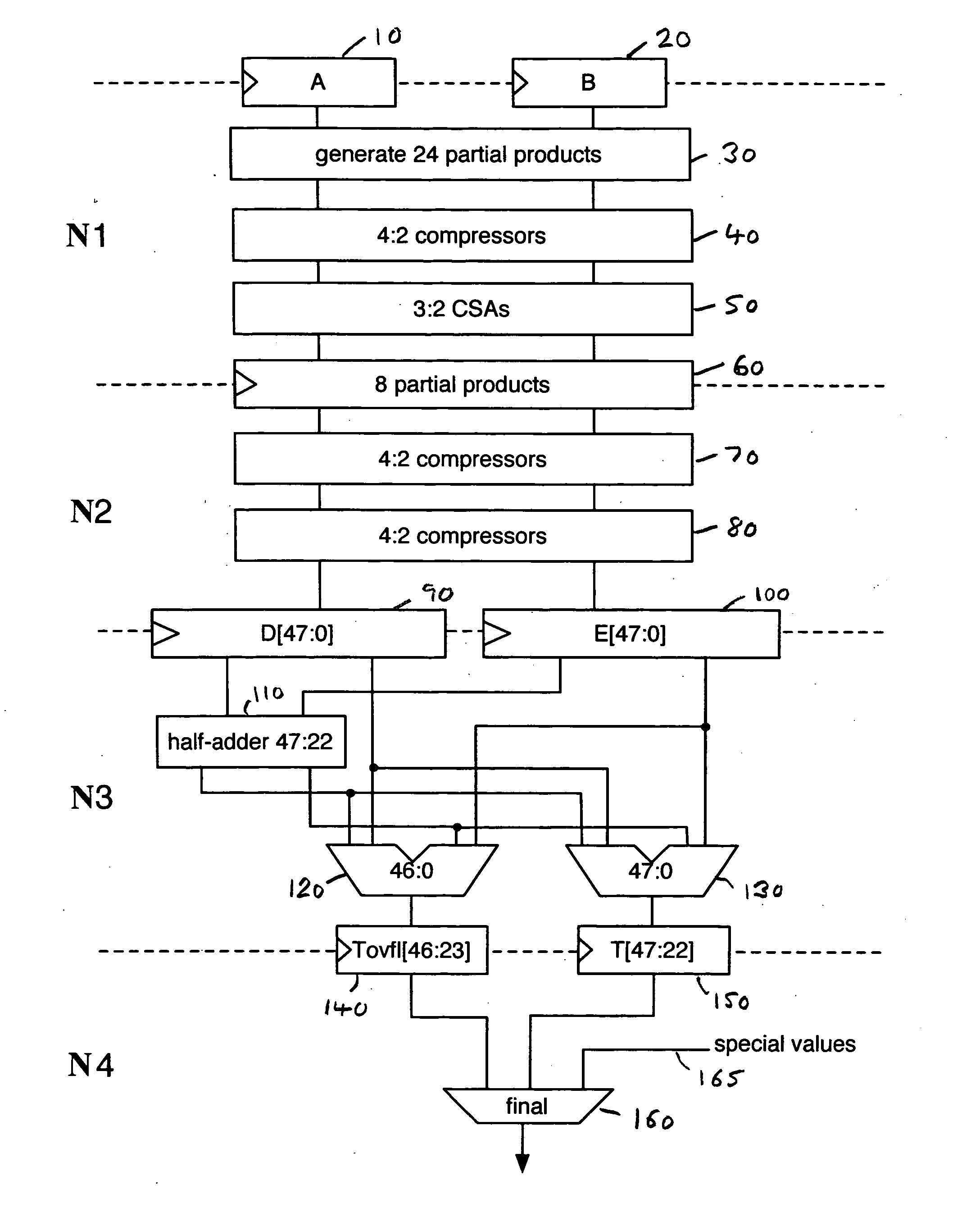Data processing apparatus and method for performing floating point multiplication
a data processing apparatus and multiplication technology, applied in the field of data processing apparatus and methods for performing floating point multiplication, can solve the problems of inability to meet the needs of data processing, delay incurred through the use of the full adder described above,
- Summary
- Abstract
- Description
- Claims
- Application Information
AI Technical Summary
Benefits of technology
Problems solved by technology
Method used
Image
Examples
Embodiment Construction
[0043]FIG. 2 is a block diagram illustrating logic provided within a data processing apparatus of one embodiment of the present invention to multiply first and second n-bit significands of two floating point operands in order to produce an n-bit final result. For the sake of illustration, it is assumed that the input operands are single precision floating point operands, and accordingly each operand consists of a 1-bit sign value, an 8-bit exponent value and a 23-bit fraction value. The 23-bit fraction value will be converted into a 24-bit significand and the 24-bit significands from both floating point operands will be provided to the registers 10, 20, respectively.
[0044] As shown in FIG. 2, the multiplier has a 4-stage pipeline. Most of the fourth stage is used for forwarding, hence for example allowing the multiplier result to be forwarded to a separate addition pipeline in order to enable multiply-accumulate operations to be performed. Given that most of the fourth stage is use...
PUM
 Login to View More
Login to View More Abstract
Description
Claims
Application Information
 Login to View More
Login to View More - R&D
- Intellectual Property
- Life Sciences
- Materials
- Tech Scout
- Unparalleled Data Quality
- Higher Quality Content
- 60% Fewer Hallucinations
Browse by: Latest US Patents, China's latest patents, Technical Efficacy Thesaurus, Application Domain, Technology Topic, Popular Technical Reports.
© 2025 PatSnap. All rights reserved.Legal|Privacy policy|Modern Slavery Act Transparency Statement|Sitemap|About US| Contact US: help@patsnap.com



